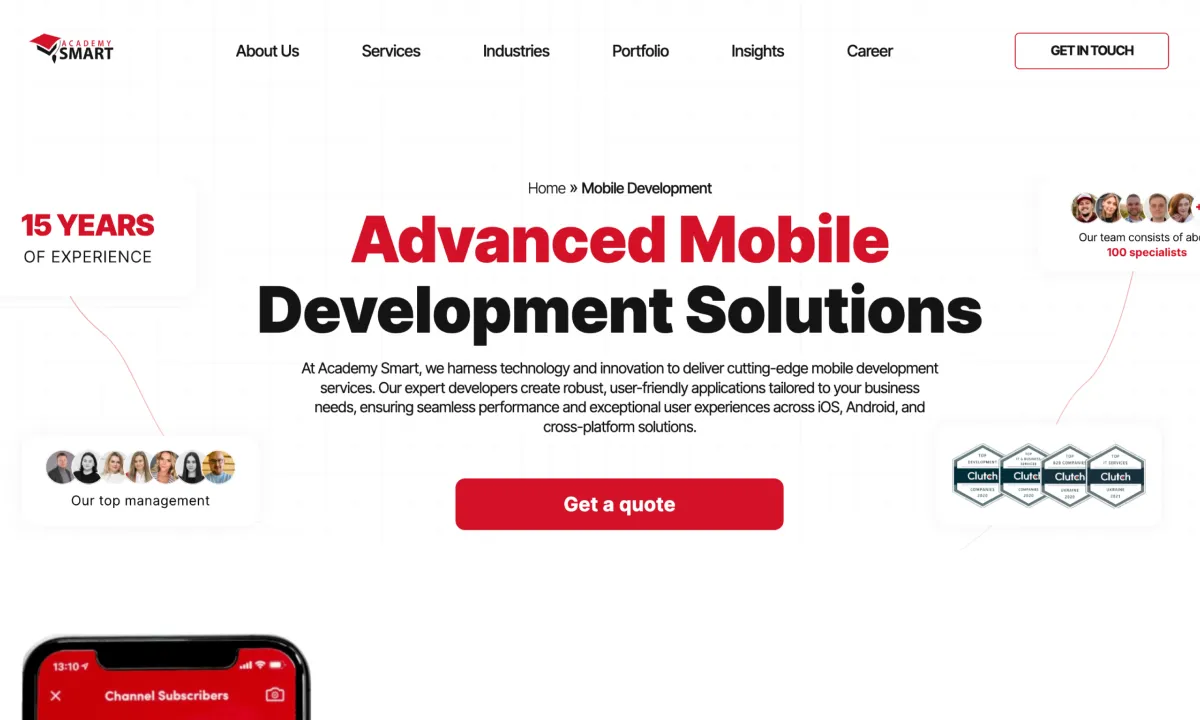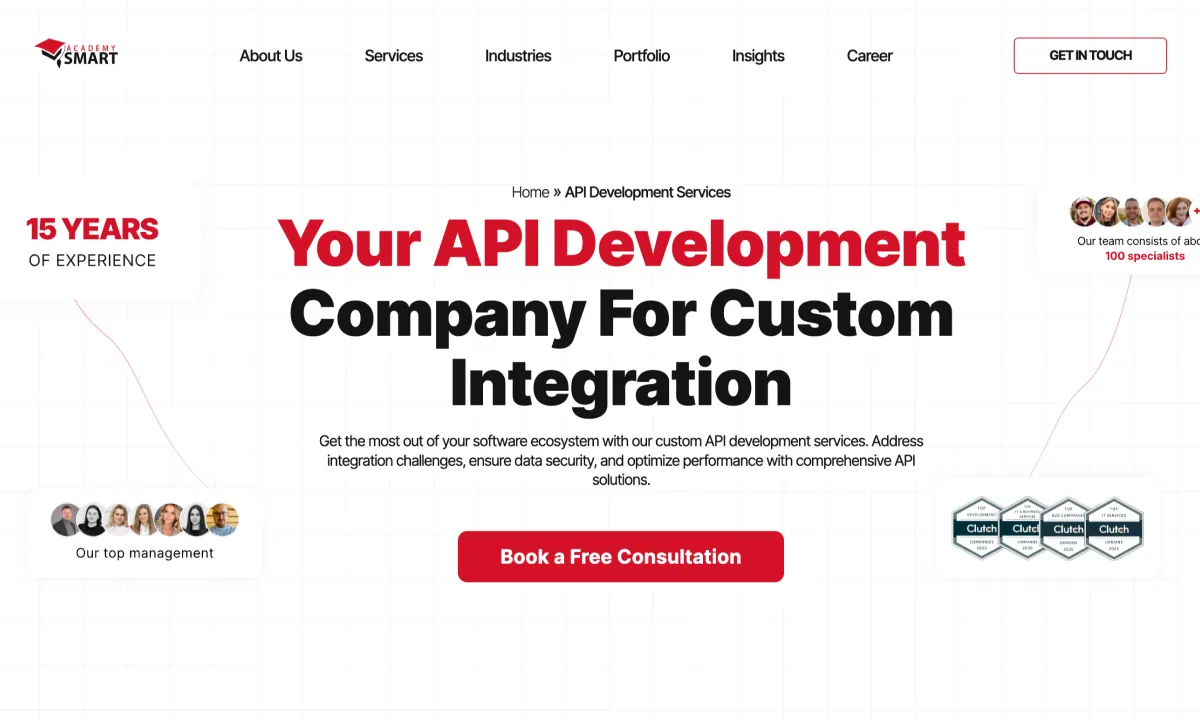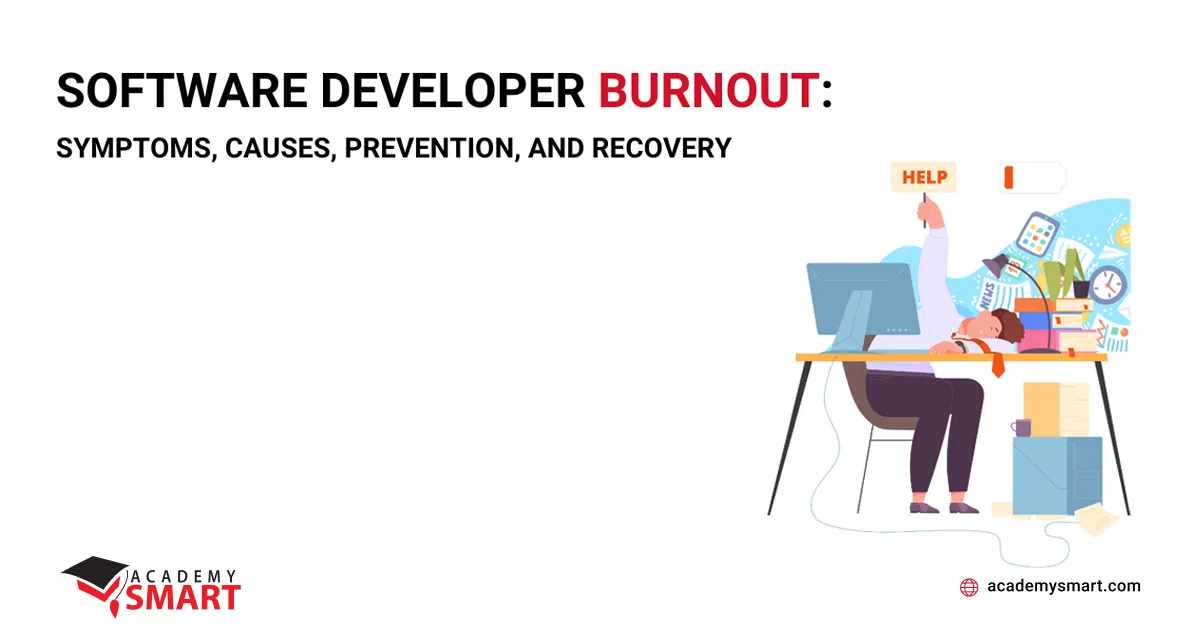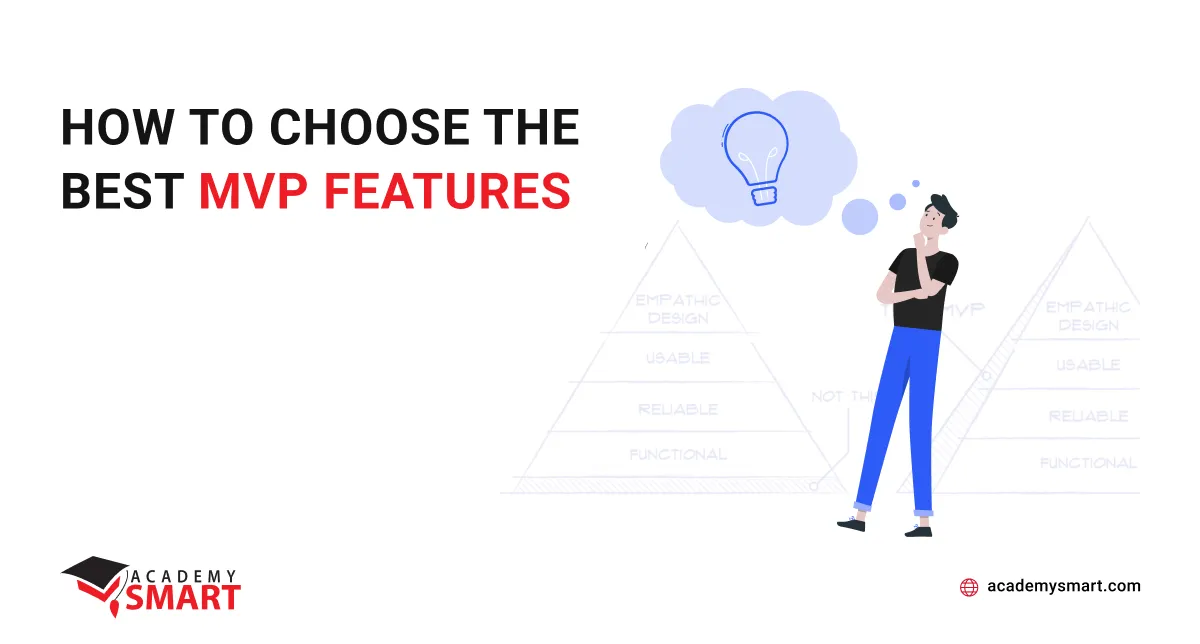
How to choose the best MVP features
Contents
Creating a software product is a multifaceted and non-linear business process that requires a unique approach to managing ideas, human and technical resources, and responsible and fundamental decisions at each step. Modern statistics show that more than a third of startup applications already make critical mistakes at the initial release stage. Indeed, if a release cannot convey its purpose to users and demonstrate competitive advantages, and, therefore, interest and retain its audience, it is doomed to failure.
As we continue the conversation about developing profitable software, this article will focus on its basic version, the minimum viable product. Here you will learn why you only need those MVP features your audience expects to get from the application and that make your app stand out in the market. We’ll also introduce you to a set of proven evaluation techniques for features prioritizing before selecting those that will get your product off the ground.
What does MVP mean
MVP in software development practice stands for Minimum Viable Product. It is an approach focusing on building an application with the core features set needed to resolve the primary problem or provide value to the target users. It is a functional version of the product that can be released and tested in the market to gather feedback and validate assumptions.
The MVP is usually a starting point in the development process and is regarded as an essential milestone in the software product roadmap. It enables the development team to quickly and cost-effectively launch a basic application version and gather real-world user feedback.
By releasing an MVP, the development team can validate their assumptions, test the app’s value proposition, and gather insights to inform future iterations and enhancements. It helps reduce the risk of building a full-featured product that may not meet the market’s needs or expectations.
Building great software always starts with a responsible approach to defining the minimum viable product features in the first place. Our customer applications confirm this rule.
What is MVP feature prioritization
MVP feature prioritization determines the order of software functionality implementation and deployment. It involves identifying and selecting the most important and valuable elements, known as killer features, that align with the main business’s goals and impact users most.
Without proper MVP feature set prioritization, a software application can face several unpleasant challenges:
- Scope creep
There is a risk of adding unnecessary MVP feature examples that do not align with the product’s core value proposition. It can lead to the project expanding beyond its intended scope, causing delays, increased costs, and potential failure to deliver on time. - Resource mismanagement
Limited resources, such as time, budget, and development capacity, are typical constraints in software creation. Allocating them to low-priority or non-essential components is risky, resulting in inefficient resource wasting and missed opportunities to release the must-have features. - Lack of focus
Prioritization helps maintain a clear focus on the core value and purpose of the product. Without it, the development team may become overwhelmed with trying to build all features simultaneously, resulting in a diluted product experience and an increased probability of not meeting user expectations. - Delayed time to market
This risk is about delays in product development, as valuable time and effort may be spent on less impactful features, pushing the release timeline further out. - User dissatisfaction
There is a higher chance of delivering a product that does not adequately address the pain points of the target users. That can lead to user disappointment, poor adoption rates, and negative reviews, ultimately affecting the success and viability of the software product.
Effective prioritization ensures that the development team concentrates on building the most valuable features first, delivering a functional and user-centric MVP, and gathering early user feedback. It helps optimize resource consumption, maintain focus, reduce time to market, and increase the likelihood of creating a well-received application. Of course, this necessary procedure was carried out comprehensively and competently for our portfolio projects.
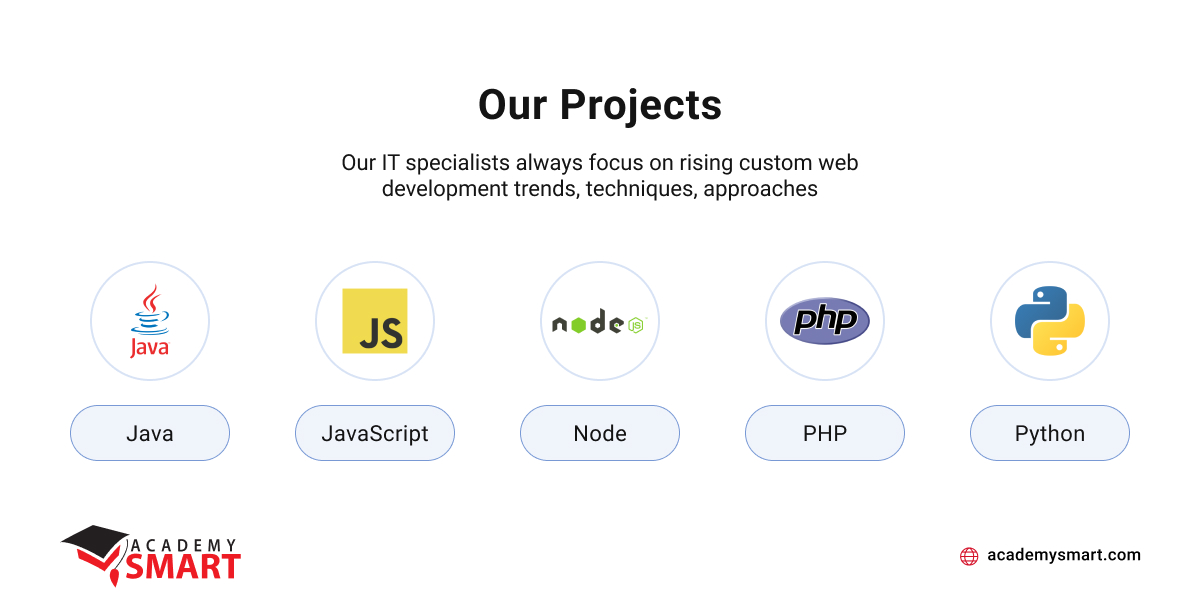
Our portfolio
Why do you need to choose and prioritize MVP features
As we have already found out, MVP is an effective tool for reducing the risks associated with software development. It is so because the minimum viable product at the cost of a small investment allows you to figure out the following:
- Are you offering the correct values to your audience?
- Whether users’ response to the application is in line with your business expectations?
- What are the areas of fixes and user experience improvements in the future?
- Whether your application can bring you profit?
Of course, to get clear signals on these points, your MVP must have the necessary and sufficient set of killer features that would unambiguously demonstrate the purpose of the software and its competitive advantages and instill confidence in users that its future releases will be even more beneficial and engaging.
Core business value definition
Undoubtedly, it is the most crucial factor in MVP features prioritization because it helps align the development efforts with the business’s strategic objectives. By clearly defining the core business value, the focus shifts towards selecting features that directly contribute to achieving those goals and delivering benefits to the business and its customers. These features typically provide the highest impact, generate revenue, enhance customer satisfaction, or differentiate the product in the market.
By prioritizing features based on core business values, the development team ensures that the limited resources and time are allocated to the most critical and relevant elements, maximizing the return on investment. It also helps avoid wasting time on unnecessary or low-value features that don’t align with the business’s primary aims and concentrate on what is important for the application’s users and owners.
Feasibility and complexity assession
Another fundamental reason for prioritization of minimum viable product features is the need to determine the feasibility and amount of effort required to implement each component.
Assessing feasibility involves considering technical requirements, available resources, time limitations, and dependencies. It helps identify whether a feature can be realistically implemented within the project’s scope and restrictions. This evaluation ensures the team focuses on achievable elements within the given resources and time frame.
The complexity estimation helps understand the effort and resources required for implementation. Complex features may require significant development time, specialized skills, or integration with existing systems. The team can allocate resources effectively by prioritizing MVP features that balance value and development effort.
Continuous improvement planning
Lastly, you have to remember the iterative and incremental nature of the development process. You should not overload the initial release because the MVP features examples discussed above are enough for testing the reaction to the application and further analyzing the demand.
By incorporating continuous improvement planning, your team can adapt and refine the MVP based on feedback, data, and evolving requirements. This approach allows for faster validation of hypotheses, more efficient resource application, and the ability to deliver a more refined and valuable product to users. It ensures that the MVP evolves and aligns with user needs, market demands, and business goals.
Prioritizing features with continuous improvement in mind allows for a more flexible and adaptive approach to development. It reflects that the initial version of the minimum viable product is not the final product but a starting point for gathering insights and learning from user interactions.
Continuous improvement planning involves:
- Setting up feedback loops;
- Monitoring user behavior;
- Collecting data;
- Actively seeking user input.
This information is then used to identify areas for further improvement. It enables a proactive and data-driven approach to feature prioritization, ensuring that the most impactful and valuable enhancements are implemented in subsequent iterations, resulting in a highly refined and successful product.

That’s why you will prioritize MVP features
How to decide on your MVP features: 14 effective methods
Now is the time to look at ways to identify MVP’s killer features that various development teams use. It is important to understand that no universal method exists since each software product is unique. And in practice, the selection of features from the log of ideas is often carried out in several manners so that it is possible to consider challenges through the prism of various value bases.
However, suppose the developers treat this stage superficially and do not want to devote time to a more detailed analysis. In that case, this is a sure signal that you should change the team on time. Remember, the more flexible and diverse the tools used by business analysts and leading company engineers involved as consultants in the industry, the higher the chances of your software attracting your audience and their satisfaction with the product.
1. User story mapping
User story mapping is a collaborative technique used to visually represent the user’s journey and prioritize the development of a product or feature. It involves capturing user stories, which are short descriptions of desired product functionality from the user’s perspective.
To create a user story map, the team identifies the main activities or steps users will take when using the product. These activities are represented as horizontal lanes or rows on the map. Each route corresponds to a specific user goal or task.
The team identifies and adds user stories as vertical cards within each lane. User stories represent specific features or functionalities that must be implemented to fulfill users’ needs or achieve their goals. The stories are arranged logically, from left to right, to reflect the flow of the user’s journey.
During mapping, the team will discuss and prioritize the user stories based on their importance, complexity, or business value. It helps determine which features should be included in the initial MVP and which can be deferred to future iterations.
User story mapping provides a holistic product view and helps align the development team’s understanding of user needs and goals. It facilitates effective communication, collaboration, and decision-making throughout the product development within the team.
2. Feature priority matrix
The Feature Priority Matrix is a visual tool to prioritize MVP features list based on their importance and impact on the overall product. It helps development teams decide which parts should be given in the initial release.
The matrix is typically divided into four quadrants: High Value – Low Effort, High Value – High Effort, Low Value – Low Effort, and Low Value – High Effort.
- Features that are placed into the High Value – Low Effort quadrant are the top priority, as they offer significant value to users while requiring minimal effort to implement. They should be considered for inclusion in the initial MVP.
- The High Value – High Effort quadrant includes features that offer high value but require substantial development work. Depending on resource availability and development constraints, these features may be set out for future releases.
- The Low Value – Low Effort quadrant consists of features offering users limited value and requiring little effort to implement. These features may be deprioritized or reconsidered based on their potential and resource allocation.
- The Low Value – High Effort quadrant contains features that offer limited value and require significant work. These features are typically deprioritized or eliminated from consideration, as they may not provide sufficient return on investment.
The Feature Priority Matrix helps product teams visualize and assess the relative importance and amount of labor required for each feature, enabling them to make strategic decisions about MVP feature prioritization, and ultimately leading to the development of a product that delivers the most value to users.
3. Eisenhower matrix
The Eisenhower Matrix, also known as the Urgent-Important Matrix, is a prioritization tool that helps teams manage their tasks and effectively allocate their time and resources. It is named after former U.S. President Dwight D. Eisenhower, known for his excellent time management skills.
The matrix categorizes tasks into four quadrants based on their urgency and importance:
- Urgent and Important contain features that require immediate attention and significantly impact achieving goals or addressing critical issues. They should be given the highest priority and implemented in MVP.
- Not Urgent but Important features are essential for long-term aims and success but don’t require immediate attention. They should be scheduled and prioritized to prevent them from becoming urgent and falling into Quadrant 1.
- Urgent but Not Important features appear critical but don’t contribute significantly to long-term priorities. They may be due to a misinterpretation of user demand or competitor analysis. Tasks to develop these features should be minimized or delegated to free up time for Quadrant 1 and 2 activities.
- Not Urgent and Not Important features are neither urgent nor essential and typically represent time-wasting. They should be eliminated or reduced to give more time for Quadrant 1 and 2 tasks.
The Eisenhower Matrix helps development teams gain clarity on MVP task prioritization, avoid constantly reacting to urgent but less critical features, and focus on activities that align with their central goals.
4. Impact-Effort matrix
The Impact-Effort is another two-dimensional matrix, outwardly similar to the Feature Priority Matrix but with a critical difference. It aims to identify the MVP features that have the potential to create the most significant impact or value for the product or project while considering the effort needed for their implementation.
While the Feature Priority Matrix prioritizes features based on their importance or value to the business owner or stakeholders, the Impact-Effort Matrix helps prioritize them based on their impact on the customer or user experience. It assesses a feature’s potential positive or negative effects on user satisfaction, usability, adoption, or overall customer value. It considers user needs, pain points, preferences, and the benefits or drawbacks of implementing each feature.
To use this visualization tool, you need to divide the sheet into four quadrants: High Impact – Low Effort, High Impact – High Effort, Low Impact – Low Effort, Low Impact – High Effort, and place the functions from the list there according to these characteristics.
5. Value vs. Complexity analysis
This analysis provides a systematic approach to prioritize MVP features list. It involves assessing the potential impact each element will deliver to the end-user and the work hardness needed to implement it.
The features’ value can be determined through market demand, customer feedback, revenue potential, or competitive advantage. On the other hand, the complexity is assessed by technical feasibility, resource requirements, development time, and potential risks or dependencies.
An analytic decision can be made by comparing the value and complexity of each function. Features with high value and low complexity are typically prioritized in MVP, as they offer significant benefits with relatively less effort. Conversely, low-value and high-complexity features are usually deprioritized.
6. Cost of delay
The Cost of delay considers the notion that delaying the delivery of a feature can incur costs or missed opportunities. Each application function is evaluated based on market demand, customer needs, strategic importance, and time sensitivity. Such factors as revenue generation, customer satisfaction, competitive advantage, market share, and business goals are crucial too.
The Cost of delay is determined by considering the potential negative consequences or lost benefits that may arise from delaying its release. Features with a higher delay cost, significant revenue potential, or critical customer needs typically have higher priority. This approach helps prioritize minimum viable product features by their actual demand.
7. MoSCoW method
The MoSCoW is a prioritization technique that categorizes features based on their importance and urgency. The acronym stands for Must have, Should have, Could have, and Won’t have.
- Must-haves are the essential features that are crucial for the MVP to meet its primary objectives. They represent the core functionality and are non-negotiable for the initial release.
- Should-have app features are necessary but not critical. They enhance the user experience or provide additional value, but the MVP can still function without them.
- Could-have features are nice to have but optional for the minimum viable product. They are considered potential enhancements or additions that can be included in future updates.
- Won’t-have functions explicitly excluded from the MVP features list. They are either unfeasible, not aligned with the project’s goals, or not essential for the initial release.
The MoSCoW provides a clear framework for decision-making and helps manage stakeholder expectations by distinguishing between must-have and nice-to-have functionality.
8. Kano model
The Kano model prioritizes application elements into five types based on their influence on customer satisfaction:
- Basic features that customers expect to be present in the product. Their absence would result in dissatisfaction, but their presence doesn’t necessarily lead to higher involvement.
- Performance features directly correlate with customer acceptance. The better the performance, the more satisfied the customers are.
- Excitement features exceed customer expectations and create a positive surprise. They are not essential but can lead to increased customer loyalty.
- Indifferent features don’t usually affect customer impressions at all. They are typically minor details or elements that customers don’t consider significant.
- Reverse features may harm customer satisfaction. Their absence is usually the way to get better results.
The Kano model enables teams to focus on delivering minimum viable product features needed while considering opportunities to delight customers with innovative or unexpected ones.
9. Grouping by numeric value
Grouping by numeric value articulates MVP features by their importance. This approach categorizes them into different groups or levels, typically represented by numbers. Each corresponds to a specific preference, with lower numbers indicating higher priority.
For example, features with a numeric value of “1” represent the highest priority critical to the product’s core functionality or value proposition. A numeric value of “2” could indicate medium-priority functionality that is important but less essential than those with a value of 1. Features with a numeric value of “3” might represent lower-priority or nice-to-have features that can be left for later development.
Grouping by numeric value allows teams to establish a clear order of priority for MVP features list.
10. Weighted scoring
In this approach, a development team establishes a set of criteria or factors that are relevant to the product’s success. They can include customer impact, business value, technical complexity, and market demand.
Each feature is evaluated against these criteria and assigned a weight that reflects its importance concerning the requirements. The weights are typically determined through discussions, surveys, or stakeholder voting. Once they are set, the scores are calculated by multiplying the weight of each criterion by the feature’s rating for that criterion.
The weighted scores provide a quantitative measure of the relative importance of each feature. Features with higher scores indicate greater value to the software product. By considering the weighted scores, the team can prioritize the features with the highest overall scores and focus on developing them in the MVP.
11. Feature buckets
This approach helps organize many components and decide which features to include in the minimum viable product. To use feature buckets, the team identifies critical criteria that are important for the product. They can include user roles, functional areas, business goals, or technical dependencies. Each feature is then put into one or more relevant buckets.
This method provides a systematic way to ensure that the MVP meets the needs of different stakeholders. By categorizing features into buckets, the team can visually understand the distribution and balance of elements across different themed spaces. It allows them to identify gaps in feature list coverage and ensure that the MVP represents a well-rounded and comprehensive solution.
12. Relative prioritization
Relative prioritization organizes MVP features by comparing and ranking them directly to each other rather than assigning absolute values or scores. It focuses on the relative importance or impact of elements within the specific context of the product’s vision, target audience expectations, or business objectives.
To use it, the team evaluates and compares features based on their perceived value, impact, effort, or other relevant criteria. The aim is to determine which functions are more critical or provide more weight than others.
The team may use techniques such as pairwise comparison or ranking exercises to establish the relative priority of features. In pairwise comparison, they are compared against each other, and the team decides which component should be prioritized. In ranking exercises, elements are ranked in order of their importance.
One of the advantages of relative prioritization is its flexibility. It allows the team to adapt and adjust priorities as the project progresses, new information emerges, or stakeholder needs change. It provides a dynamic approach to feature prioritization that can accommodate evolving requirements and preferences.
13. Bubble sorting
It is a simple algorithmic method for prioritizing minimum viable product features based on their relative importance or value. It follows the concept of repeatedly comparing adjacent features and swapping their positions until the list is sorted in the desired order.
The development team assigns a value or score to each function, indicating its priority to utilize bubble sorting for prioritization. The features are then arranged in a list. The algorithm compares the first two features and, if necessary, swaps their positions to prioritize the higher-valued element. It then moves to the next pair of adjacent components and continues this process until the end of the list. This first pass through the list ensures that the highest-valued feature reaches its appropriate position. The algorithm repeats this process multiple times, with each iteration focusing on a smaller portion of the list.
Bubble sorting is a straightforward method that allows teams to prioritize MVP features. However, it’s important to note that bubble sorting may not be the most efficient for large feature sets, as it requires multiple iterations and comparisons. It is more suitable for smaller lists or when immediate prioritization is needed.
14. Speed boat
The Speed boat method is a visual prioritization technique used to create a valuable MVP feature list based on its influence on the product’s success.
In this visual model, the ship represents the product, and the features are depicted as anchors tied to the boat. The team then discusses and identifies the factors or obstacles that can impede the product’s progress or slow it down. These factors are represented as rocks or weights tied to the anchors. Each rock signifies an obstacle or challenge associated with a specific feature.
The next step is to prioritize the features based on their potential impact on overcoming the obstacles and propelling the boat forward. The team can use various techniques, such as dot voting or group discussion, to determine the priority of each function.
By analyzing the position of the anchors (features) relative to the boat’s destination and considering the weight of the rocks (obstacles), the team can identify the critical components for the product’s success that must be implemented in the MVP.
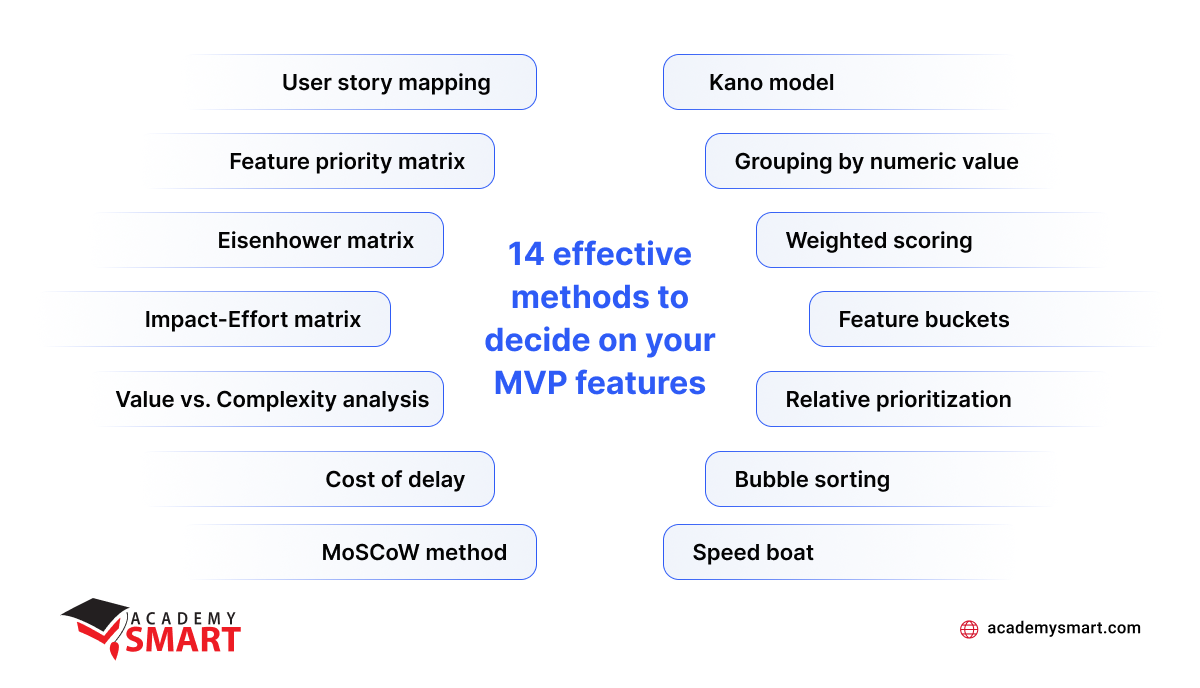
Main methods to decide on your MVP’s killer features
How Academy SMART can help you
With over 13 years of experience developing custom software, the Academy Smart team knows how to help clients define the feature content of an MVP to launch it successfully.
For our customers, we offer the support of analytical teams, which include business analysts and tech leaders with extensive industry experience. You may critically assess your product needs, list critical features for an initial release, and develop a long-term strategy for moving your project forward with their professional assistance.
Of course, your collaboration benefits are broader than our detailed and thorough consulting. We develop complex enterprise software solutions turnkey. In addition, Academy Smart provides the opportunity to hire specific IT professionals with solid expertise to work on your projects directly under your supervision.
We are ready to help you get your software up and running quickly and efficiently. Contact us to discuss the details of cooperation.
MVP features: Frequently Asked Questions
What makes a good MVP?
A good MVP addresses a core need of the target audience while delivering the minimum feature set required to validate the product concept and gather meaningful user feedback.
What should an MVP contain?
It should contain the essential features that demonstrate the product’s value proposition and user experience specificity while excluding any optional ones set aside for future releases.
Book a free consultation

Reach out to start talking today!

